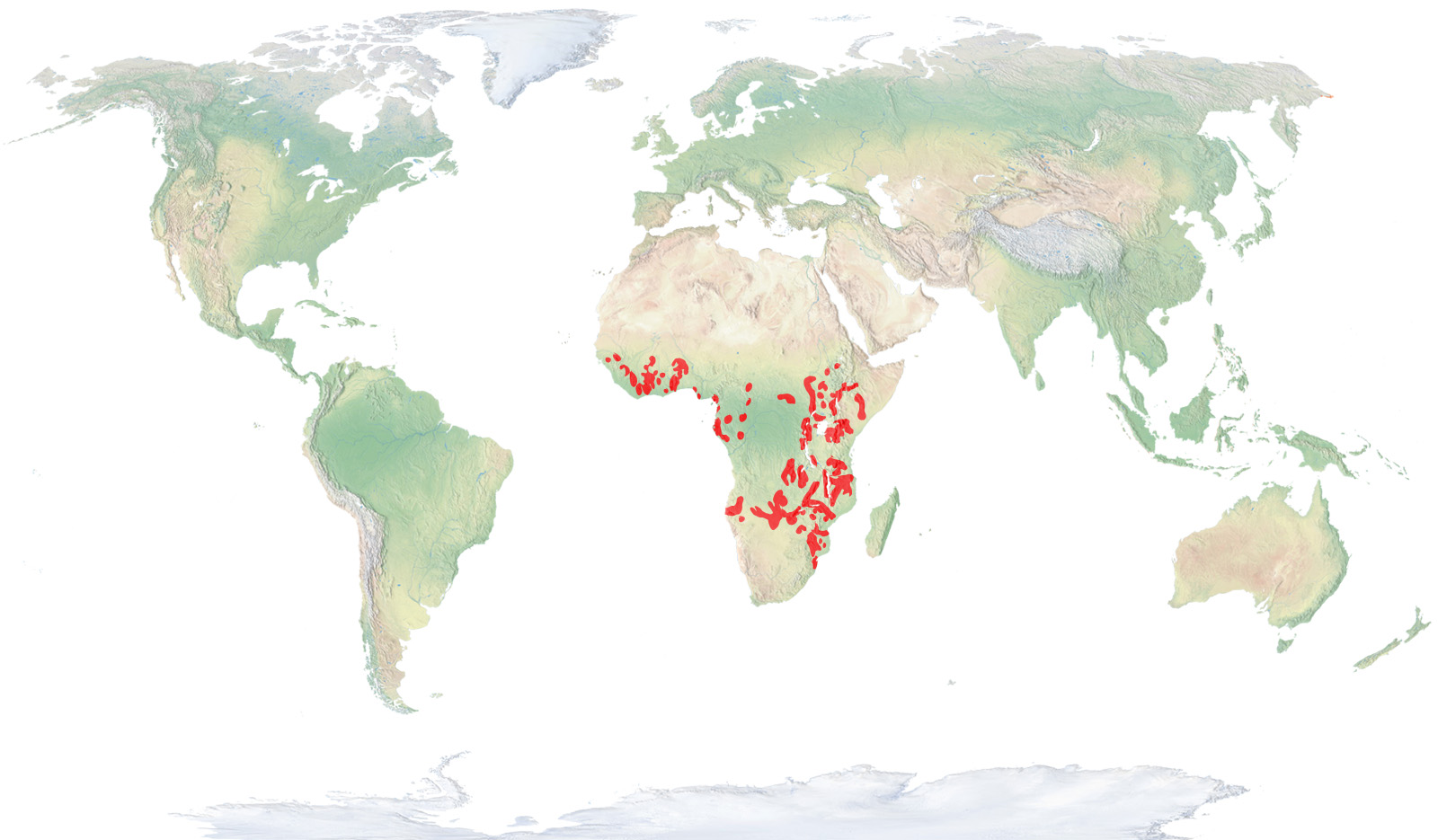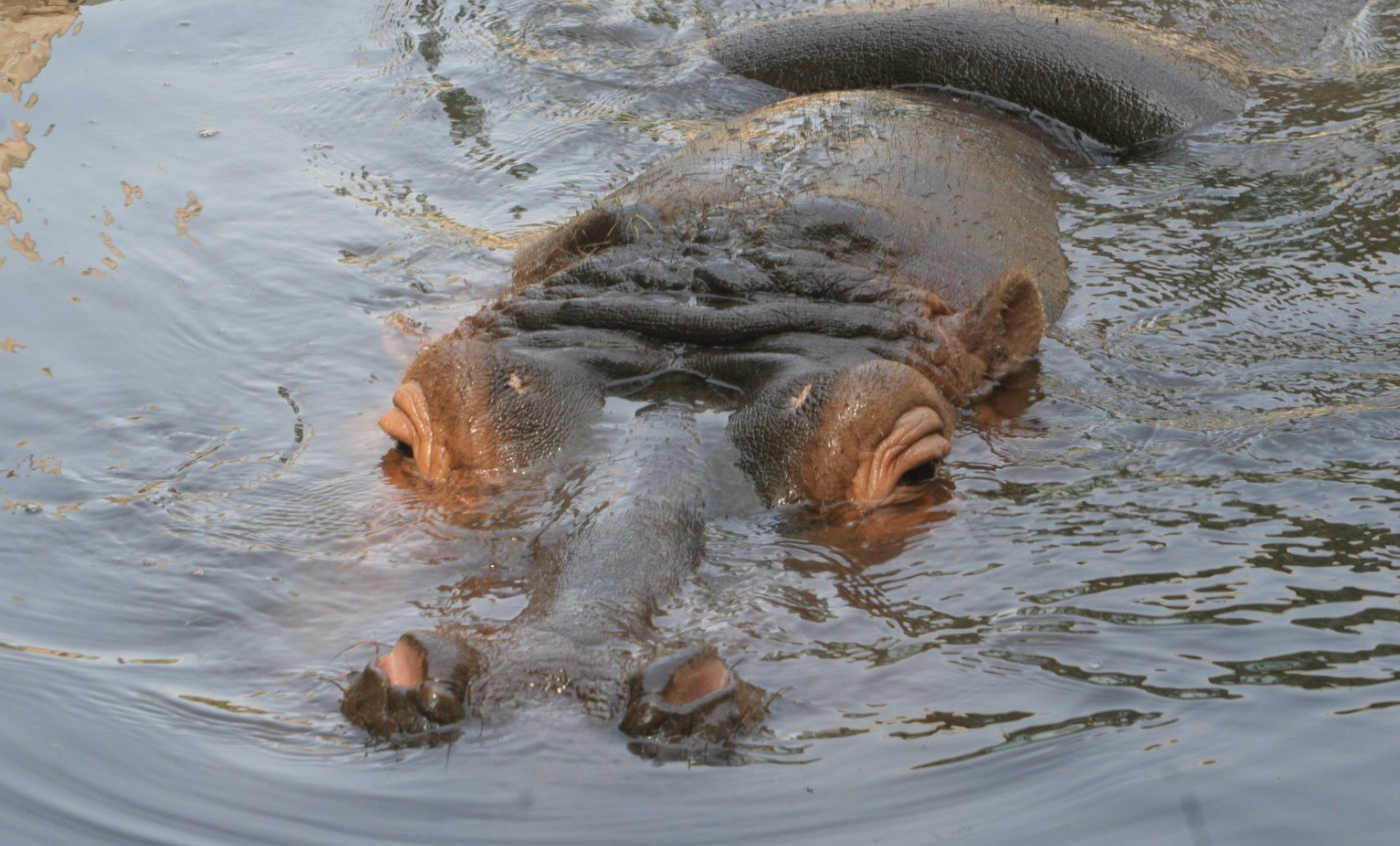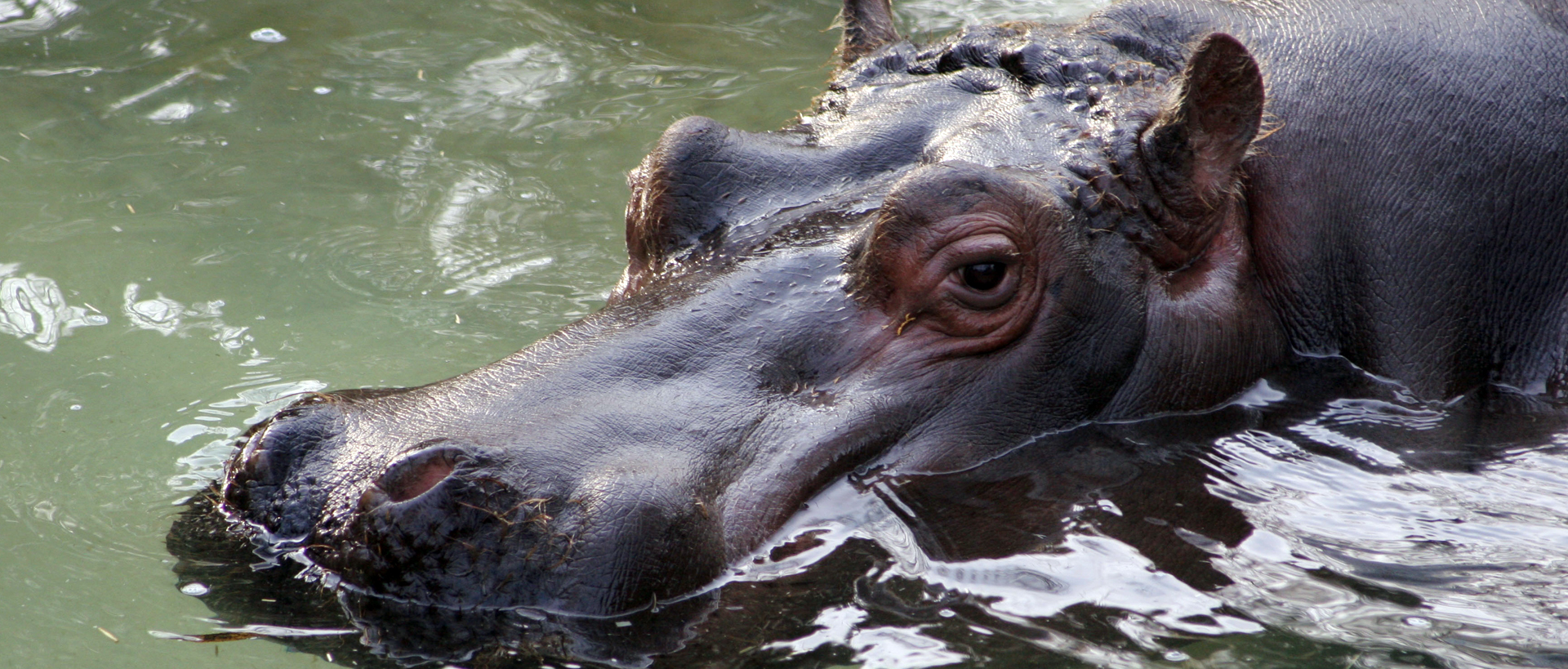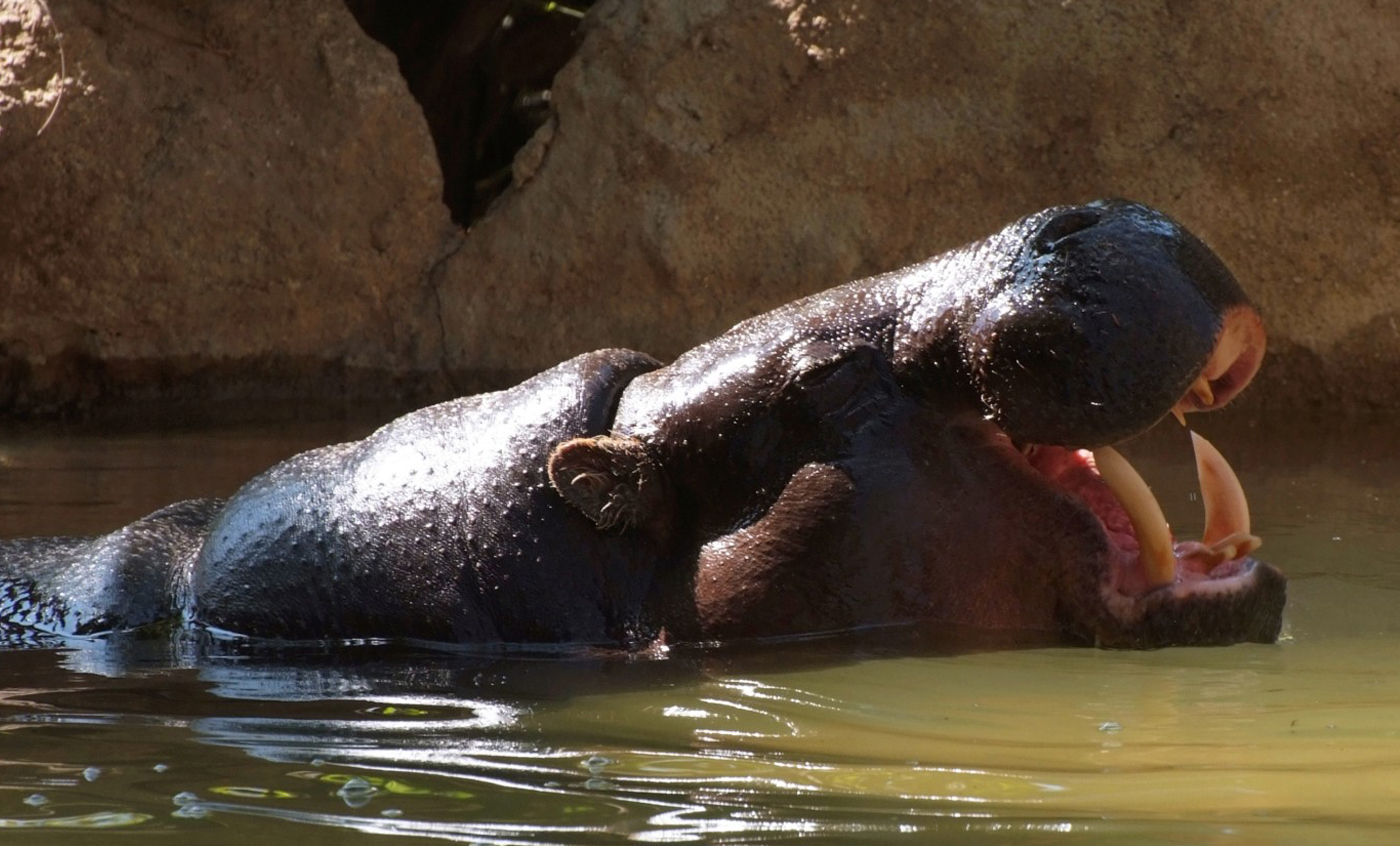Common hippopotamus
It is, along with rhinos and elephants, one of Africa’s giants, with some males exceeding 4,000 kg. With a gregarious and sedentary lifestyle, it spends most of the day in the water, to protect itself from the sun and high ambient temperatures.
At dusk, and always through prefixed paths, they leave the water and go to feeding territories, where they eat a great amount of plants. The fights between males for territorial or reproduction matters are impressive.
Breeding program
Natural habit
Distributed irregularly from the Upper Nile to the Sudan, Senegal and Mali and, in the south, to different areas of southern Africa.

- Distribution / Resident
- Breeding
- Wintering
- Subspecies
Risk level
- Extint
- Extint in the wild
- Critically endangered
- In Danger
- Vulnerable
- Near threatened
- Minor concern
- Insufficient data
- Not evaluated
Taxonomy
Physical characteristics
Biology
Reproduction
Biology
The shape of its body, grey with pink tones, let this amphibian move freely in aquatic environments. The ears, eyes and nostrils, which can be opened and closed at will, are located in the upper part of the head, so it can watch the surroundings by only emerging slightly, while the rest of the body remains underwater. Its skin is smooth, greasy, hairless and with a very thin epidermis. It has very short legs and a big mouth with very large tusks.
All kinds of aquatic habitats with permanent and rather shallow water: rivers, streams, lakes, lagoons, swamps.
It feeds basically from grass it finds in fertile lands near water, but also from aquatic plants that are uproot from the bottom of the river, which it eats peacefully in the surface. Near human settlements, hippopotamus can invade fields to eat crops, and can destroy an entire plantation in one single night. For this reason, it is hunted in many of its native areas by the local inhabitants, which view them as a great threat for crops.
At the beginning of the dry season, oestrus takes place, and eight months after copulation, during the rainy season, a single calf is born, with a weight of more than 40 kg. The birth takes place generally in the water, so the new-born is not crushed under the mother’s weight. With seven years, the male is fit for reproduction, although its body continues to develop for a long time and hippos do not usually conquer their own territory until they are 20 years old. Normally, their lifespan is 40 years, although some specimens live for more than 50.
With a gregarious and sedentary lifestyle, it spends most of the day resting in the water, to protect itself from high ambient temperatures, that quickly dry its delicate skin. Hippos are often found in rivers, lakes and mud ponds, in groups of females or calves, more or less compact, with males -which are very aggressive and, therefore, with a more individual behaviour- surrounding them. Extremely violent fights are part of the daily life of this animal, and males often sport impressive scars made by their rival’s huge tusks, which can reach up to 50 cm long.
Despite its practically amphibian behaviour, it cannot stay underwater for a long time without breathing (5/6 minutes at most). For this reason, when bothered, it can emerge without being seen, leaving only its nostrils, eyes and ears in the surface. It can also submerge quietly and reach the surface in a different spot of the river.
At dusk, when temperatures decrease, the groups of hippopotamus leave the water and, through prefixed paths, head to their feeding territories, where they feed all night.
During the last years, the populations have suffered an important downturn, caused by hunters interested in their meat and, mainly, their tusks, although he ivory trade currently being much more pursued and regulated internationally. Pressure of human settlements and extractive activities in the environment also contribute seriously to the loss of their habitat.
The Zoo of Barcelona takes part in the ESB of this species.





